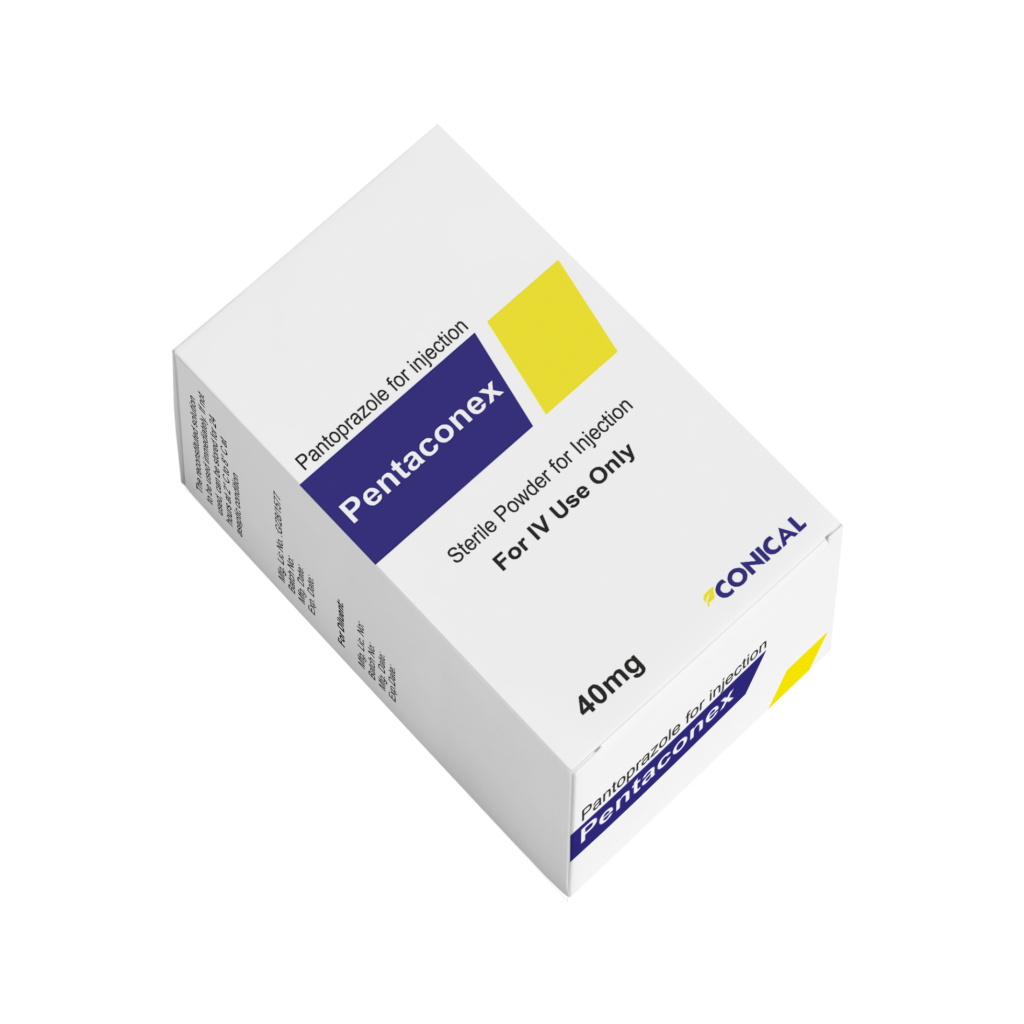







Reflux oesophagitis
Gastric and duodenal ulcer
Zollinger-Ellison-Syndrome and other pathological hypersecretory conditions
In presence of alarm symptoms
In the presence of any alarm symptom (e. g. significant unintentional weight loss, recurrent vomiting, dysphagia, haematemesis, anaemia or melaena) and when gastric ulcer is suspected or present, malignancy should be excluded, as treatment with pantoprazole may alleviate symptoms and delay diagnosis. Further investigation is to be considered if symptoms persist despite adequate treatment.
Hepatic Impairment
In patients with severe liver impairment, the liver enzymes should be monitored during therapy. In the case of a rise of the liver enzymes, the treatment should be discontinued.
Gastrointestinal infections caused by bacteria
Pantoprazole, like all proton pump inhibitors (PPIs), might be expected to increase the counts of bacteria normally present in the upper gastrointestinal tract. Treatment with Pantoprazole may lead to a slightly increased risk of gastrointestinal infections caused by bacteria such as Salmonella and Campylobacter or C. difficile.
Hypomagnesaemia
Severe hypomagnesaemia has been reported in patients treated with PPIs like pantoprazole for at least three months, and in most cases for a year. Serious manifestations of hypomagnesaemia such as fatigue, tetany, delirium, convulsions, dizziness and ventricular arrhythmia can occur but they may begin insidiously and be overlooked. In most affected patients, hypomagnesaemia improved after magnesium replacement and discontinuation of the PPI.
For patients expected to be on prolonged treatment or who take PPIs with digoxin or drug that may cause hypomagnesaemia (e.g., diuretics), health care professionals should consider measuring magnesium levels before starting PPI treatment and periodically during treatment.
Subacute cutaneous lupus erythematosus (SCLE)
Proton pump inhibitors are associated with very infrequent cases of SCLE. If lesions occur, especially in sun-exposed areas of the skin, and if accompanied by arthralgia, the patient should seek medical help promptly and the health care professional should consider stopping pantoprazole. SCLE after previous treatment with a proton pump inhibitor may increase the risk of SCLE with other proton pump inhibitors.
Bone fractures
Proton pump inhibitors, especially if used in high doses and over long durations (>1 year), may modestly increase the risk of hip, wrist and spine fracture, predominantly in the elderly or in presence of other recognised risk factors.
Observational studies suggest that proton pump inhibitors may increase the overall risk of fracture by 10–40%. Some of this increase may be due to other risk factors. Patients at risk of osteoporosis should receive care according to current clinical guidelines and they should have an adequate intake of vitamin D and calcium.
Interference with laboratory tests
Increased Chromogranin A (CgA) level may interfere with investigations for neuroendocrine tumours. To avoid this interference, pantoprazole treatment should be stopped for at least 5 days before CgA measurements. If CgA and gastrin levels have not returned to reference range after initial measurement, measurements should be repeated 14 days after cessation of proton pump inhibitor treatment.
Intravenous administration of Pantoprazole is recommended only if oral administration is not appropriate. Data are available on intravenous use for up to 7 days. Therefore, as soon as oral therapy is possible, treatment with Pantoprazole i.v. should be discontinued and 40 mg pantoprazole p.o. should be administered instead.
Fundic gland polyps (benign), Injection site thrombophlebitis.
Store below 30oC preferably in cool and dry place. Protect from light.
The reconstituted solution to be used immediately. If not used, can be stored for 24 hours at 2° C to 8°C at aseptic condition. If not used immediately, in-use storage times and conditions are the responsibility of the user.
Keep the medicine out of reach of children.
10 ml Amber USP type III glass vial with grey bromobutyl rubber stopper, sealed with a yellow flip-off aluminium seal. Pantoprazole 40 mg powder for solution for injection in glass vial is supplied with 10 ml plastic ampoule of diluent sodium chloride injection 0.9% w/v in unit carton with pack insert.
Contact us directly to receive full information on the product, the formulation, the science behind it, stability data, and more. Our Business Development Manager is a click away.
Questions are useful tools, they open lines of communication; give us information; improve interactions, facilitate analysis, and many more.
A pharma CMO is a special kind of an organization, offering contract manufacturing services to pharmaceutical companies for various kinds of drug formulations.
Reduce overall costs and time to market :
Contract manufacturers already have the needed infrastructure and technical staff, so working with a CMO or CDMO can decrease the cost of manufacturing your pharmaceutical products.
Scalability and flexible production capacity :
You can produce what you need when you need it without worrying about excess capacity. Additionally, CMOs understand the importance of quality and compliance, so you don't have to sacrifice safety for scalability.
Save on upgrading and maintaining equipment :
If you have your manufacturing facility, you’ll have to pay to upgrade your equipment as technology advances—which can get expensive. A CMO/CDMO’s only function is to make and distribute products, so part of their core business responsibility is to update their equipment whenever needed and perform maintenance.
Ease supply chain issues :
During the pandemic, there were several instances of supply chain issues, including medicine shortages. CMOs are generally better equipped than startups to handle a supply chain crisis.
Bandwidth to focus on core competencies
When your company resources aren’t directly allocated to manufacturing and distribution, you have more time to focus on other tasks, like marketing your new drug, researching, or working on drug discovery.
We have 7+ manufacturing sites with a minimum of WHO GMP certification and other country-specific approvals like NAFDAC approved, PPK Kenya Approved, TFDA Tanzania Approved, EU-GMP Approved.
We have below manufacturing capacity:
For Tablet, Capsule, and soft gel: up to 1 million units per shift
For Syrup: up to 0.05 Million per shift
For Ampoule and Vial: up to 0.1 million units per shift
For Ointment and Cream: up to 0.1 million units per shift
For Suppository: 0.1 Million units per shift
